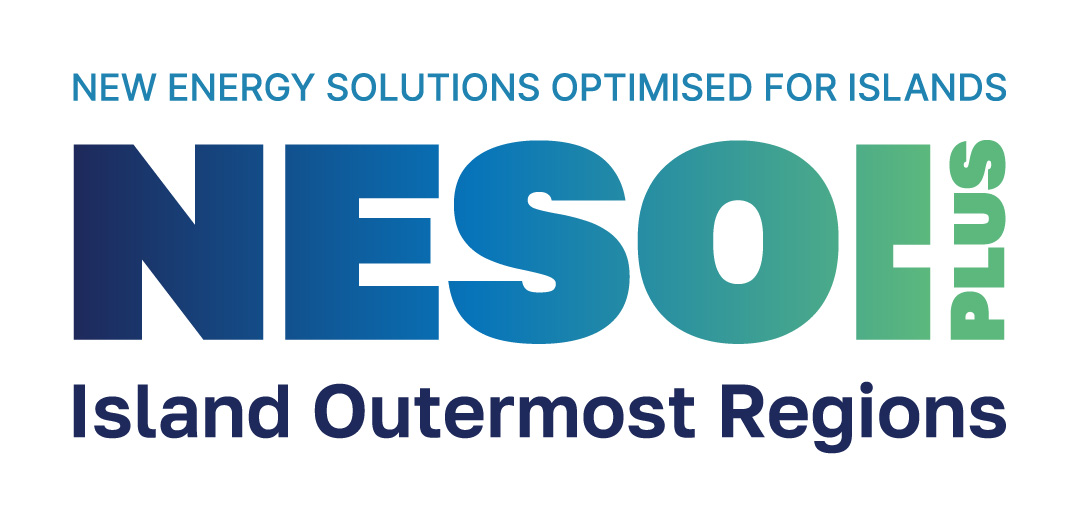Transport Electrification On Sea and Land in Antiparos (TESLA) is a project supported by NESOI European Islands Facility, managed by our partners from CERTH, and promoted by Municipality of Antiparos, and Paros-Antiparos Ferry Cooperative.
What is TESLA?
This project has been aimed at initiating the electrification of the island's shipping sector, with a view to opening pathways for Sustainable Mobility in both land and sea. The technology selected is commercially mature and can be used immediately.
More in detail, the project concerns the replacement of the conventional propulsion system with a battery and generator one, in some ferries operating the Paros- Antiparos connection. The primary objective is to electrify Antiparos' land and sea transportation sectors using RES. Additionally, it is planned to establish EV charging stations and partially electrify the municipal fleet of Antiparos. To meet the demand for ferries and electric vehicles, PV panels have been built.
In addition, another important aspect of this project is that it is expected that the electrification will improve the overall quality of life provided to the citizens of Antiparos. The municipality is going to provide the possibility of using electric vehicles to low-income citizens, while in the municipal parking lot, they will be able to use the charging stations that will be installed.
Finally,the project can be replicated in other insular areas with a neighbouring counterpart like Paros- Antiparos, since the technologies in question are well suited to them and are easily replicable. In addition to providing municipal electric vehicles in conjunction with the building of a photovoltaic station, electric vehicle charging stations can be installed anywhere within a municipality's administrative boundaries on the Greek islands and throughout the whole country. The electrification of the ship responsible for the Paros-Antiparos connection can be replicated in any ferry connection between islands or between the mainland and islands.
The electrification of an island’s transport sector
One of the technical options that can be envisaged to move towards more sustainable modes of transport is the electrification of the transport sector linked to the production of clean energy. On an island, the electrification of the transport sector encompasses land transport means, public and private, sea transport means, charging stations adapted to all transport means, and clean electricity generation means (like PV).
According to the TESLA project, Antiparos Island would require 7 private e-car charging stations in addition to the 3 charging stations for the municipal fleet, 1 charging station at the port, and 1 station for ferries that are permanently installed on ships.
Another key sizing driver of the project concerns the PV capacity to be installed in the context of restricted land use and availability. According to the project, a rated capacity of 550 kWp is needed to cover mobility needs and municipality buildings’ consumption. Constraints include the presence of protected areas, land-use criteria, orientation, and slope of the ground.
Expected energy savings
For all the proposed interventions, the primary energy savings are estimated at approximately 500 MWh/yr, and this corresponds to a reduction of 41%. Considering the given combined total fuel consumption avoided, and the zero-emissions energy produced from PV stations, the GHG emissions avoided are around 500 tCO2-eq/yr.
How does NESOI Support this project?
The European Islands Facility (NESOI) aims to unlock the potential of EU islands to become the locomotives of the European Energy Transition. To do so, NESOI aims to mobilize more than €100 Million of investment in sustainable energy projects to give EU islands the opportunity to implement energy technologies and innovative approaches, in a cost-competitive way.
The Municipality of Antiparos may encounter difficulties related to the limited amount of municipal land available for the installation of the solar plant, the operation and upkeep of the suggested systems, the availability of qualified technical personnel who will need to be trained, and the identification of appropriate financial solutions for the various interventions. Another challenge is about the high cost of the electric batteries on the island, which is in the range of 650€/kWh compared to 140€/kWh for typical batteries on land. In this context, the support coming from NESOI is fundamental.
More in specific, NESOI has provided the following backing:
- Assessment of the key project sizing drivers
- Identification of suitable technological options given existing project sizing requirements
- Definition of the required environmental permitting procedures
- Cost Benefit Analysis and socio-economic and environmental impact evaluation
- Definition of the technical, economic, and financial, fiscal project inputs
- Risk analysis and identification of available mitigation strategies and Assessment of existing procurement options (e.g., tender, PPP, etc.)
- Financial modeling and identification of target scenario and Identification of financing/funding options
- Action plan and identification of project monitoring procedures
DOWNLOAD THE PROJECT BROCHURE


